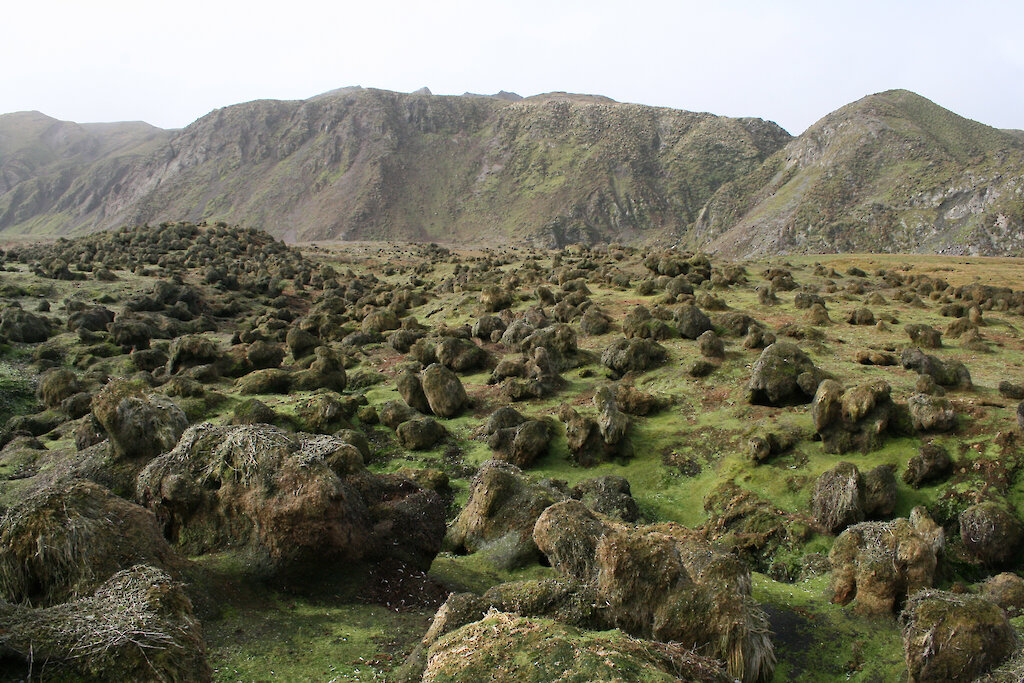Impact On Wildlifemacquarie Island
Impact of Wildlife Gardens
Private residential property makes up approximately one-third of the urban landscape and studies show that the impact of wildlife gardening is substantial.
Initial findings from studies of 24 National Wildlife Federation certified habitats across the country suggest that wildlife gardening, if adopted on a wider scale, can help boost biodiversity: the variety of life that gives ecosystems their resiliency. This research was conducted as part of an ambitious four-year studyAmerican Residential Macrosystem: Yard Futures, funded by the National Science Foundation (NSF).
- Macquarie Island is an incredibly important breeding location for many bird species. Populations here have suffered from the impacts of cats, rodents and rabbits. It’s still early days on the island in the post eradication era, but the signs are good. King penguin chick population is also being monitored over winter in some locations.
- Macquarie Island wildlife Macquarie Island is a wildlife paradise! At different times of the year, the coastal margins teem with vast congregations of wildlife. Numerous species of seabirds and up to 100,000 seals and 4 million penguins are regular visitors to this tiny subantarctic island.
- Wildlife Comservation Action is dedicated to building the capacity of local communities to protect and coexist with wildlife, while improving community livelihoods.
To date, these impacts have been quantified on several sub-Antarctic islands, but the role of house mice on more temperate islands is poorly known. On South Atlantic Gough Island, non-commensal house mice (Mus musculus L.) were probably introduced in the early 19th century and are now extremely abundant.
These properties can connect corridors of habitat necessary for migratory species between natural and larger protected areas of habitat on state, municipal and federal lands. They provide a continuum of resources if planted with a rich diversity of native plants and trees to supply the food chain for insects and the animals who depend on them. (Tallamy, 2007)
Another study examined whether or not the matrix of homes and private properties between and near habitat patches (like parks, riparian areas and other natural areas) in Cook County, IL (Chicago Area), plays a role in supporting healthy migratory and resident bird population.
The study found that “streets with bird-friendly yards had almost twice as many species as those without.” The study also indicated that the presence of a variety of native trees provides habitat complexity and is crucial to making these yards more bird-friendly. (Belaire, Whelan, Minor, 2015)
Since 1973, property owners who have Certified Wildlife Habitats with the National Wildlife Federation, have witnessed this sort of evidence first hand. More recently, specific studies have been conducted in which these certified properties were compared with nearby non-certified properties.
Research on Certified Wildlife Habitats confirmed that property owner commitment to providing the four elements of habitat, food, water, cover, and places to raise young, while practicing sustainable gardening and landscaping—made a real difference:
Certified Wildlife Habitat properties providedmore abundant and higher quality wildlife habitat relative to non-certified yards.(Drake, Widows, 2014)
Specific Results for Wildlife and Nature

Certified Wildlife Habitats resulted in high percentages of:
- Wildlife that is present and observed on a daily basis, in particular, migratory wildlife such as bees, butterflies, birds, along with small mammals.
- Indicator species, such as monarch butterflies, bumblebees, and frogs. Indicator species are those that are moderately affected by disturbances to ecosystems and can act as an index of ecosystem health. Experimental small-scale flower patches increase bee species density. (Maria-Carolina M. Simao, 2017)
- Tree coverage than neighboring non -certified sites, improving water retention, minimizing erosion and surface habitat. Significantly, reduced carbon and air pollution properties was evident. In fact, National Wildlife Federation Certified Wildlife Habitats sequester 811.62 metric tons of CO2 annually more than their non‐certified neighbors. (UCLA, 2013)
- Native plants supporting wildlife than neighboring non-certified sites.
- Water conservation and stormwater runoff management through groundwater permeability.
Benefits to People
Other literature along with participant self-reporting shows that habitat owners spent more time outside and that the overall increased oxygen producing vegetation, the visual interest and color of their active wildlife garden, and tree coverage had beneficial effects on both people and the ecosystem.
“Garden as if life depends on it.” Doug Tallamy
Sources
Bringing Nature Home: How You Can Sustain Wildlife with Native Plants. Douglas W. Tallamy, Timber Press, 2007
Evaluating Certified Wildlife Habitats and the Minds Behind Them. Practicum in Environmental Science. Jennifer M. Chan, Terry H. Chen, Yuxin Jin, Nicole M. Tachiki, Sara L. Vetter, Megan L. Vyenielo, Gina Y. Zheng. University of California Los Angeles. Institute of the Environment and Sustainability. 2014
Impact on the National Wildlife Federations’ Certified Wildlife Habitat Program on Mammalian Species Richness in Urbanized Residential Properties. Katherine L.M. Busch. Thesis, George Mason University, VA. 2013
Evaluating the National Wildlife Federation's Certified Wildlife Habitat™ program

Impact On Wildlifemacquarie Island Hopping
Landscape and Urban Planning, Volume 129, Issue null, Pages 32-43. Steffenie A. Widows, David Drake. 2014.
Impact On Wildlifemacquarie Island Golf Cart Rentals
Having our yards and sharing them too: the collective effects of yards on native bird species in an urban landscape. J. Amy Belaire, Christopher J. Whelan, & Emily S. Minor (2015). Ecological Applications 24(8), 2132–2143. DOI: 10.1890/13-2259.1.
